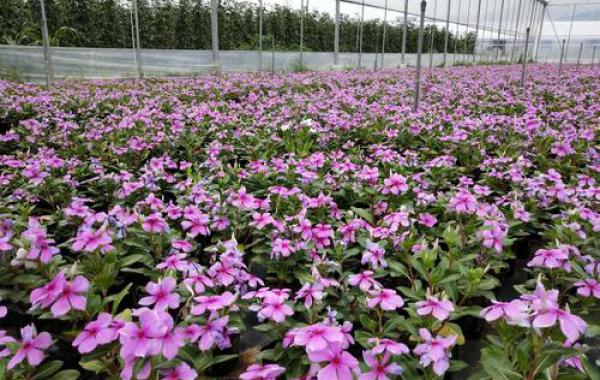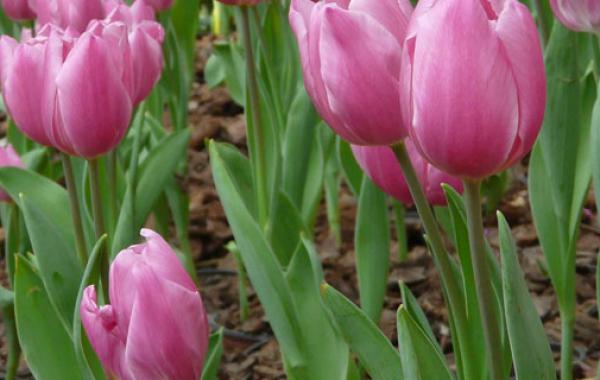What misunderstandings will flower planting enter?

What misunderstandings will flower planting enter?
There are also misunderstandings in growing flowers, do you know? In fact, flowers are also very difficult to raise, and there are many reasons for this. I would like to tell you several mistakes that often occur in the process of growing flowers, hoping to help all flower growers.
Myth 1: perennial flowers have been kept for three or five years without changing pots.
This will result in insufficient nutrition of flowers. For example, chrysanthemums grow for a long time will have the phenomenon of Lignification, this time can be rejuvenated by cutting. You can also cut off all the plants above the base and let the old roots sprout again. When changing pots, pruning part of the roots by the way can also stimulate the further development and growth of roots.
Myth 2: water regularly every few days.
The weather and the environment of flowers are different every day, and the frequency of watering should be different, and the frequency of watering should be determined according to the specific situation.
Myth 3: the bigger the basin, the better.
When the plant root system is relatively weak and the water absorption capacity is limited, it is easy to produce waterlogging if the basin is too large, and the upper plant will definitely not grow well after rotting roots. Generally speaking, the diameter of the basin is twice the diameter of the root.
Myth 4: put tea, tea or egg shells directly in the flowerpot for fertilization reasons.
In fact, the residual egg whites and tea leaves in the eggshell are unfermented organic matter that ferments in flowerpots and attracts germs and worms, which may lead to the alkalization of the matrix.
Myth 5: ceramic pots and porcelain pots are better.
Now there are many kinds of substrates, in fact, all pots can be used to raise flowers. The water permeability of pottery basin is better, so you can choose when planting flowers at home at the beginning. However, if the matrix is selected properly, a better degree of water permeability can be achieved with any flowerpot.
Myth 6: the leaves of the plant are less watered when they wilt.
Sometimes it is not necessarily that it is underwatered, or it may be that it is watered too much. For example, in winter, if the potted plant is placed in a room with strong heating, the water in the surface soil will evaporate very quickly, causing us to think that the potted soil is dry and constantly watered. In fact, at this time, the interior of the basin soil may not be dry for a long time, too much watering can easily cause waterlogging and rotting roots.
Misunderstanding 1: only "half of the water" watering should be done "do not dry, do not water, water thoroughly", that is, do not water when the basin soil is not dry, if watered, it should be thoroughly watered at once. Watering must be thoroughly, not only "half of the water" (that is, only hit the wet basin soil surface), this will make the flower root water supply is insufficient, resulting in defoliation and even death.
Misunderstanding 2: pay attention to watering time generally speaking, watering time, winter should be around 4 pm, other seasons before 10:00 in the morning is appropriate. In particular, we should pay attention to the relatively high noon temperature in summer, do not water at this time, this is watering will make the soil temperature drop suddenly, water absorption slows down, resulting in insufficient water supply, resulting in scorched upper leaves of flowers.
Myth 3: remember to leave water droplets on the leaves at night if you have the habit of watering flowers at night, or wipe the leaves with a wet cloth, this is a mistake, which can easily cause flower leaves to rot and cause diseases and insect pests. Make sure there is no water on the leaves at night to facilitate the normal growth of flowers.
Misunderstanding 4: tea can not nourish flowers and pour leftover tea into the flowerpot will increase the soil pH, easily cause chlorosis, and may even lead to flower death. In addition, the leftover tea will breed miscellaneous bacteria in the process of decomposition, which will affect environmental hygiene and consume soil oxygen, which is not conducive to flower growth.
Misunderstanding 5: blind multi-fertilization weak plants with thin branches, poor photosynthesis and slow metabolism. At this time is not suitable for more fertilization, we have heard the word deficiency is not replenished, plants are the same, sick and weak plants must not blindly topdressing, so as not to backfire. Even when fertilizing, do not apply more, "three percent fertilizer and seven percent water" is the best.
Misunderstanding 6: indoor flowers without ventilation is the primary killer of flower health, which not only affects the normal breathing of flowers, but also affects the normal growth of flowers. Doors and windows should be opened often to create good ventilation conditions to ensure the normal breathing of flowers.
Myth 7: people who keep indoor plants indoors often overlook a problem, that is, they think that indoor plants can be kept indoors. But in fact, potted flowers are decorated indoors for too long, often due to lack of sunlight, resulting in poor growth, so potted flowers should be moved out of the outdoor recuperation every once in a while. However, pay attention to avoid the high temperature period in summer and the low temperature period in winter.
Related
- What if the leaves of potted flowers turn yellow?
- Florescence Control of several Flowers
- Anti-freezing technology and post-freezing nursing technology of flowers
- What is the classification of flowers? What are the common methods of flower classification?
- Prevention and control of alkali and acid damage of flowers in courtyard
- Technology of Anti-freezing and restoring growth of Flower seedlings in greenhouse and greenhouse
- How does flower fertilization not hurt the root? Fertilization technology of flowers
- Key points of disinfection in flower greenhouse
- Several pesticides that are banned or used cautiously in flowers
- How to fertilize the flowers that watch the leaves?



